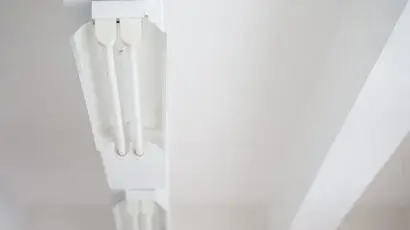
Get your free Melbourne Electrician quote today!
Our team of Melbourne Electricians is here to help you with any questions or concerns you may have. We’re committed to providing you with the best possible service and support.
Upgrading to LED lights can be a great way to improve your space. This blog post explores whether you can directly replace fluorescent tubes with LEDs. It also dives into the benefits of switching to LED lighting.
For decades, fluorescent lights have dominated both commercial spaces like offices and factories and even our homes. Their efficiency and affordability made them the go-to choice. However, a new champion has emerged: LED lighting. Praised for its exceptional energy efficiency and longer lifespan, LED technology is rapidly gaining ground. This shift presents an interesting question: can we simply swap out the fluorescent tubes we already have for these new LED alternatives?
In this discussion, we’ll explore the feasibility of replacing fluorescent tubes with LED tubes. We’ll delve into the technical aspects, compatibility issues, and potential benefits of making this switch. The answer, as you might guess, isn’t a simple yes or no. But by understanding the factors involved, you can determine if a direct swap is possible in your specific situation.
The Rise of LED Lighting: A Brighter Future
LED (Light Emitting Diode) technology is rapidly transforming the lighting landscape. Compared to traditional fluorescent lighting, LEDs boast superior energy efficiency. They convert a much larger percentage of electrical input into light, using up to 75% less energy to achieve the same brightness. This translates to significant cost savings on electricity bills.
On top of efficiency, LEDs have an impressive lifespan. Fluorescent tubes last about 30,000 hours, but top-quality LEDs can run for a remarkable 50,000 hours or more. This results in years of dependable light without frequent replacements, which significantly cuts down maintenance expenses.
But LEDs offer more than just practical benefits. They excel in light quality, delivering crisp, natural light that closely resembles sunlight. This improved colour rendering makes colours appear more vibrant and true to life.
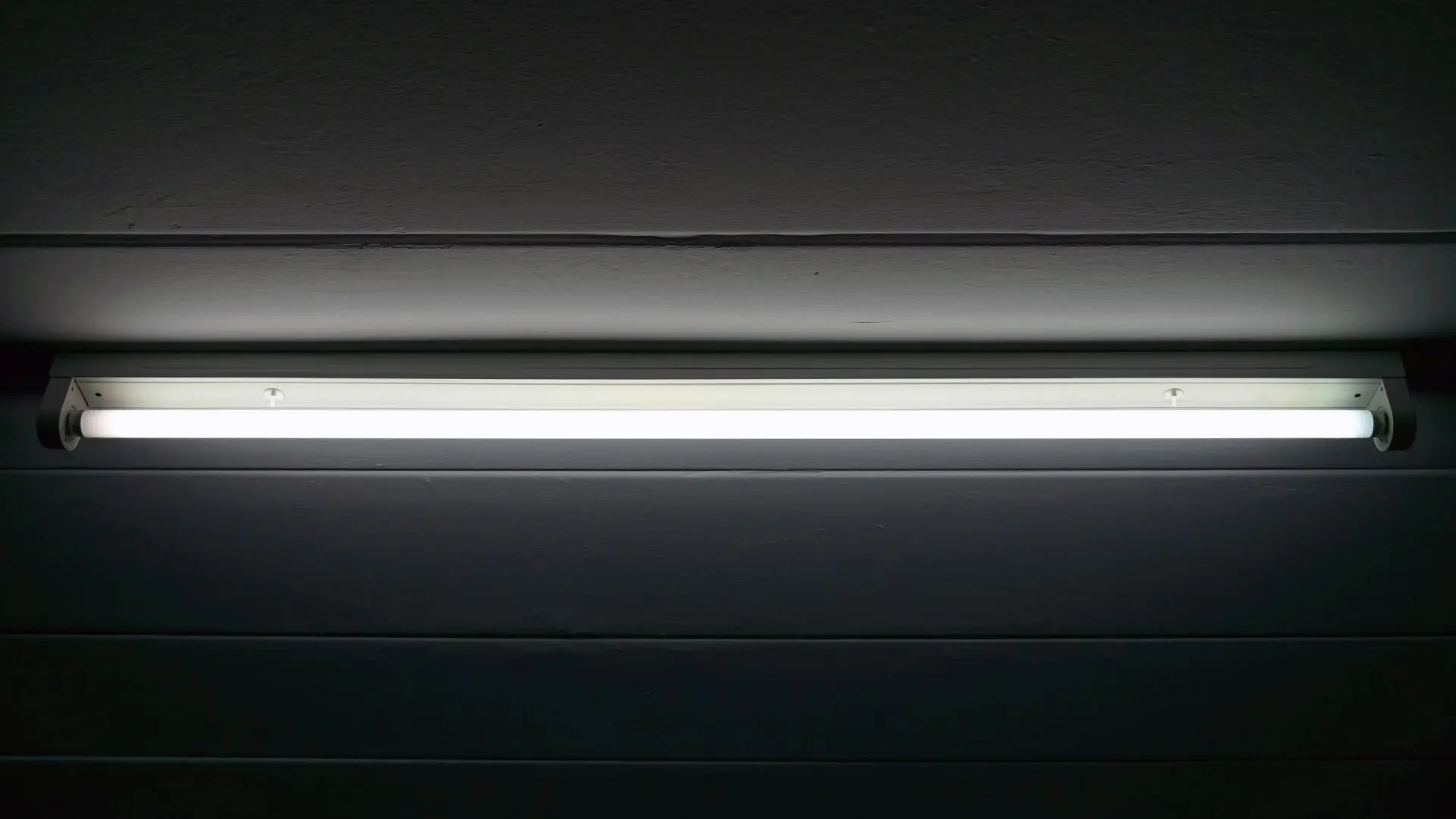
Lastly, LEDs are fantastic for the environment. Unlike some fluorescent bulbs, LEDs don’t contain harmful mercury, which gets rid of potential disposal issues. Plus, their lower energy use means fewer greenhouse gases from power plants.
With their impressive efficiency, longevity, and environmental benefits, LED lighting is poised to illuminate a brighter future.
Illuminating with Fluorescence: Understanding Fluorescent Tubes
Fluorescent tubes, known for their energy efficiency, create light through a fascinating process. Inside the glass tube, a small amount of mercury vapour and inert gases like argon reside. When electricity flows through the tube, a component called a ballast regulates the current. Additionally, a starter (in older models) provides a high-voltage surge to initiate the process.
This surge excites the mercury vapour, causing it to release invisible ultraviolet (UV) light. The tube’s interior is coated with a substance called phosphor. This phosphor absorbs the UV and re-emits it as visible light, producing the well-known fluorescent glow.
Fluorescent tubes come in different diameters designated by a T followed by a number (e.g., T8, T12). T12 tubes are larger in diameter and are being phased out due to lower efficiency. T8 tubes are more common today and offer a good balance of size and efficiency. Applications for fluorescent tubes include offices, schools, and commercial buildings.
While efficient, fluorescent lights have limitations. The initial surge can cause a flickering effect, and they take a moment to reach full brightness. Additionally, the mercury content necessitates proper disposal procedures at the end of their lifespan.
Compatibility: Replacing Fluorescent Tubes with LEDs
Plenty of buildings still use fluorescent lighting. Once the standard, these lights are now being outshone by LEDs due to their energy efficiency, lifespan, and superior light quality. Fortunately, you don’t have to change the whole fixture to reap these benefits. Retrofitting your current fluorescent setups with LED tubes has become a favoured, budget-friendly choice.
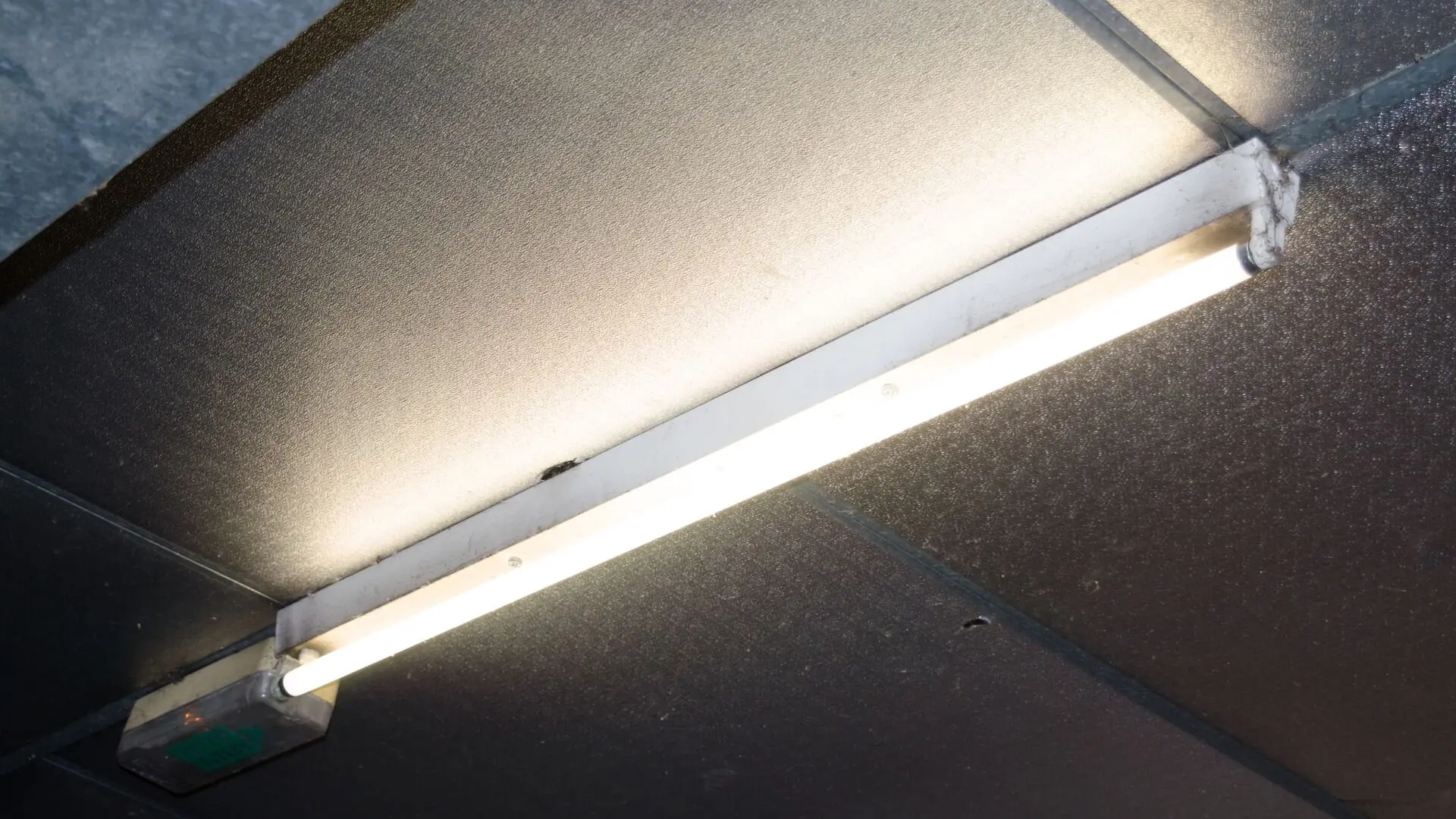
There are two main types of LED tubes for retrofitting:
- Ballast-compatible LED tubes: These are the simplest to install. They fit directly with your current ballast, so no rewiring is needed. Just take out the old tube and pop the LED one in. But watch out—they might not suit every ballast, especially older magnetic types.
- Ballast-bypass LED tubes: These have broader compatibility and often work with both magnetic and electronic ballasts. However, they need the ballast bypassed, which means rewiring the fixture. It’s best left to a qualified electrician, as it involves handling live wires.
Choosing the right LED tube for your retrofit project depends on a few key factors:
- Existing ballast type: Identifying the type of ballast you have (magnetic or electronic) is crucial. Ballast-compatible tubes only work with specific types, while bypass tubes offer more flexibility.
- Fixture compatibility: Check the fixture’s manual or consult the manufacturer to ensure compatibility with LED tubes. Some fixtures might not be suitable for retrofitting due to design limitations.
- Comfort level with electrical work: Ballast-compatible tubes are ideal for DIY enthusiasts, while bypass tubes often require rewiring the fixture. If you’re not comfortable working with electrical wiring, it’s best to leave the installation to a professional electrician.
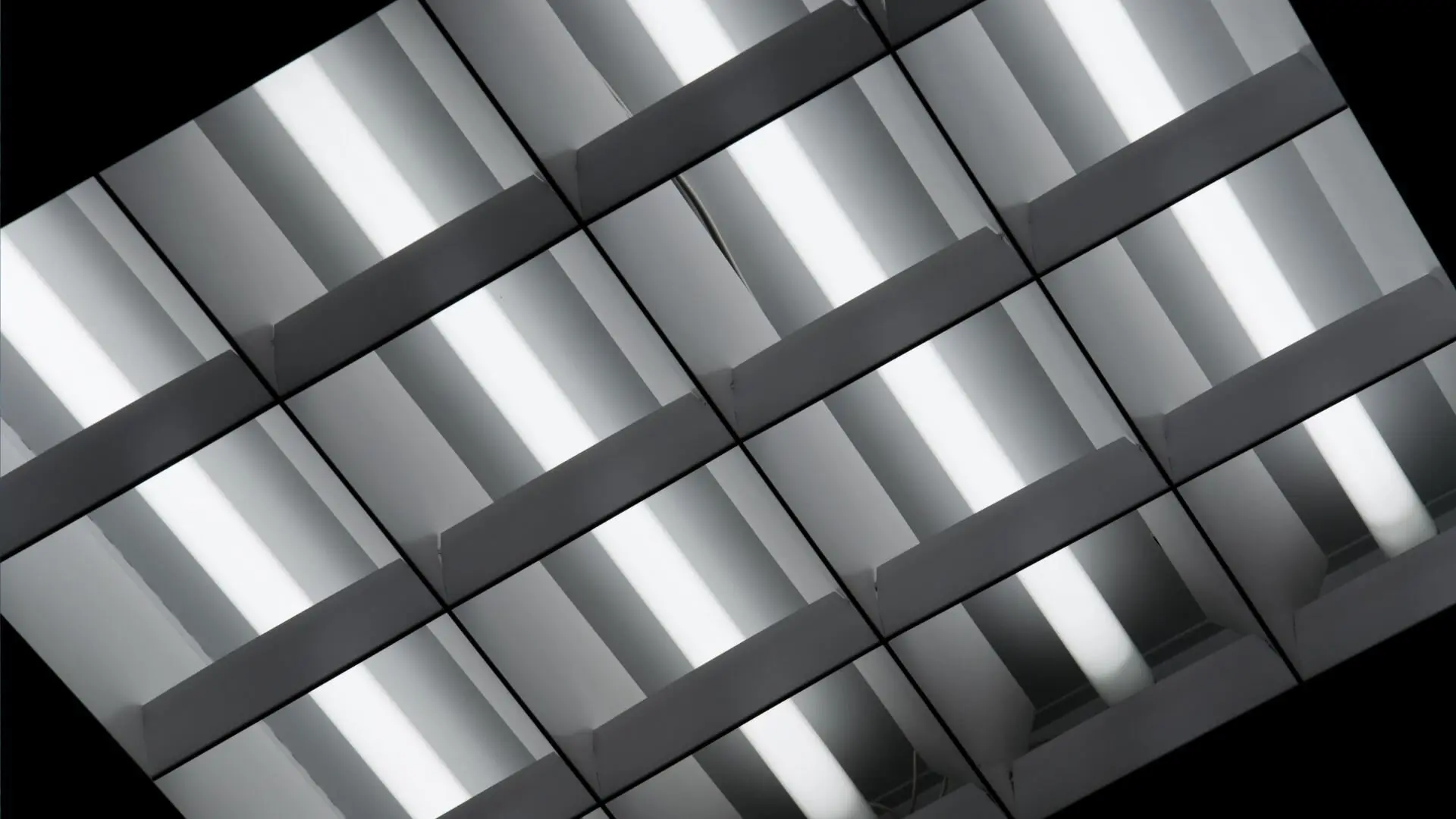
Upgrading to LED Tubes
Here’s a basic guide to replacing fluorescent tubes with LEDs, applicable to both direct replacements and rewiring options:
- Safety First: Absolutely turn off the power before touching any fixture components.
- Out with the Old: Remove the existing fluorescent tubes.
- Compatibility Check: If using bypass LEDs, rewiring the fixture might be necessary. For compatible tubes, this step is optional. Remember, electrical work can be risky. When in doubt, consult a qualified electrician.
- LED Time: Install the new LED tubes, ensuring a snug fit.
- Light Up Your Savings: Turn the power back on and test the new LEDs.
Benefits of Upgrading to LED
Making the switch to LEDs brings substantial benefits. They’re much more energy-efficient, which means savings on your electricity bills. Plus, LEDs deliver superior light quality and true-to-life colours.
They also last for many years, cutting down on maintenance. And importantly, LEDs are eco-friendly, helping to save resources and lower your carbon footprint.
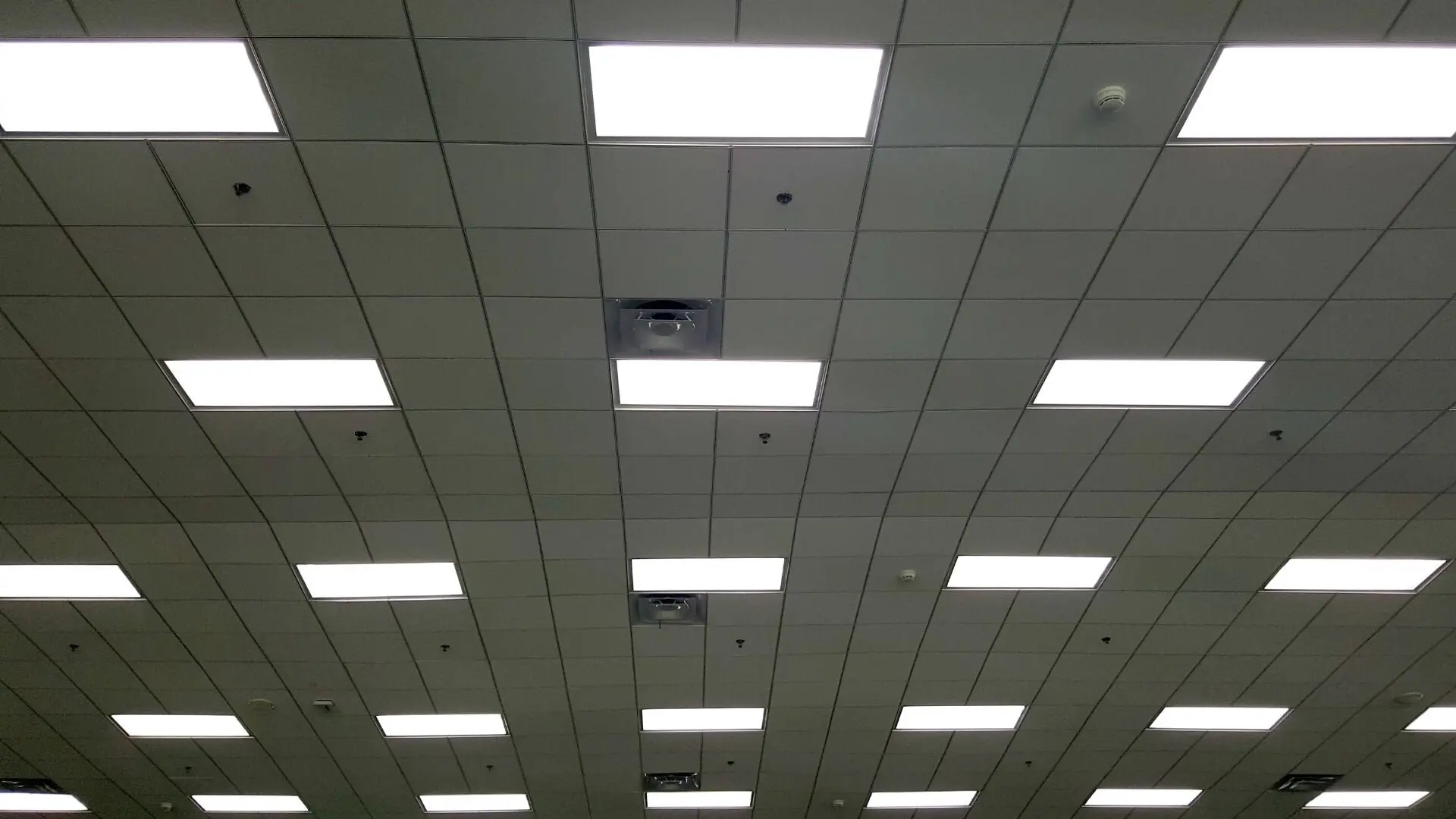
Light Up Your Savings: Embrace the Future of Lighting with LEDs
As you can see, replacing fluorescent tubes with LEDs is a smart upgrade! LEDs boast lower energy bills, extended lifespans, and superior colour quality. However, navigating the LED market and choosing the ideal solution can be tricky.
That’s where WP Electrical steps in! Contact WP Electrical today for professional LED lighting services. Our team of experts will assess your specific needs, recommend the perfect LED solutions, and handle the entire installation process efficiently and safely.
Published by: Pascal Harb17 October 2025